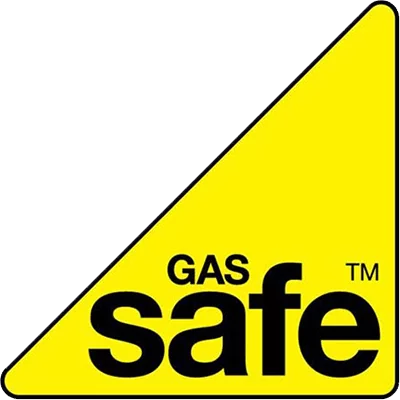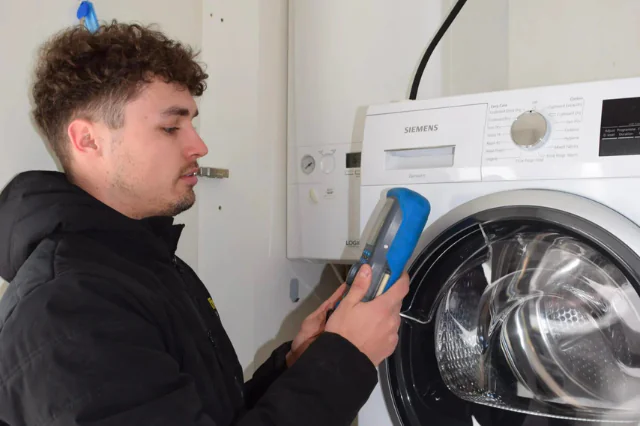Encountering a high-pressure reading on your boiler’s gauge? This article delivers clear steps on how to reduce boiler pressure, with practical advice to resolve the issue and prevent future risks. Whether you’re bleeding radiators or draining water, we cover what you need to know to safeguard your heating system.
Key Takeaways
- Regularly monitoring boiler pressure and recognizing high pressure signs like readings consistently above 2 bars, leaks, and malfunctioning can prevent damage and ensure boiler longevity.
- Lowering high boiler pressure can be achieved through bleeding radiators or draining water via the drain cock, with pressure readings between 1 and 1.5 bars considered optimal.
- In case of persistent high boiler pressure, it’s crucial to check for faulty components such as the filling loop or expansion vessel and consult a Gas Safe Registered engineer for serious faults and regular servicing.
Identifying the Signs of High Boiler Pressure

Recognizing the indications of high boiler pressure is key to ensuring the longevity and health of your boiler. The most obvious sign of boiler pressure too high is when your boiler’s pressure gauge consistently reads in the red zone, typically above 2 bars. This excessive pressure can lead to boiler malfunctions, such as the boiler shutting down or failing to switch on.
In more severe cases, high boiler pressure can cause leaks or internal damage to your boiler. Leaks are not only a nuisance but can lead to costly repairs if not addressed promptly. Therefore, understanding these signals and how to handle them can prevent future troubles and unnecessary expenses, especially since high boiler pressure dangerous situations can arise.
Inspect Your Boiler’s Pressure Gauge
The boiler pressure gauge on your boiler is like a health monitor – it provides valuable information on your boiler’s current state and how it is performing. It indicates the balance between water and air in your heating system, with optimal pressure typically displayed in the green zone. When the heating is active, a pressure reading between 1.5 and 2.5 bar suggests normal operation. However, consistent readings of 3 to 4 bars may indicate an issue.
Being familiar with the location of your boiler’s pressure gauge is just as important. On modern boilers, you can find it on the front or under the control panel. For older boilers, it may be located underneath amongst the pipework. It is vital to perform regular checks to avoid a constant fall into the red zone, this includes daily inspections of the water level glass, pressure, and temperature gauges where necessary.
Leakage Checks Around Radiators and Pipes
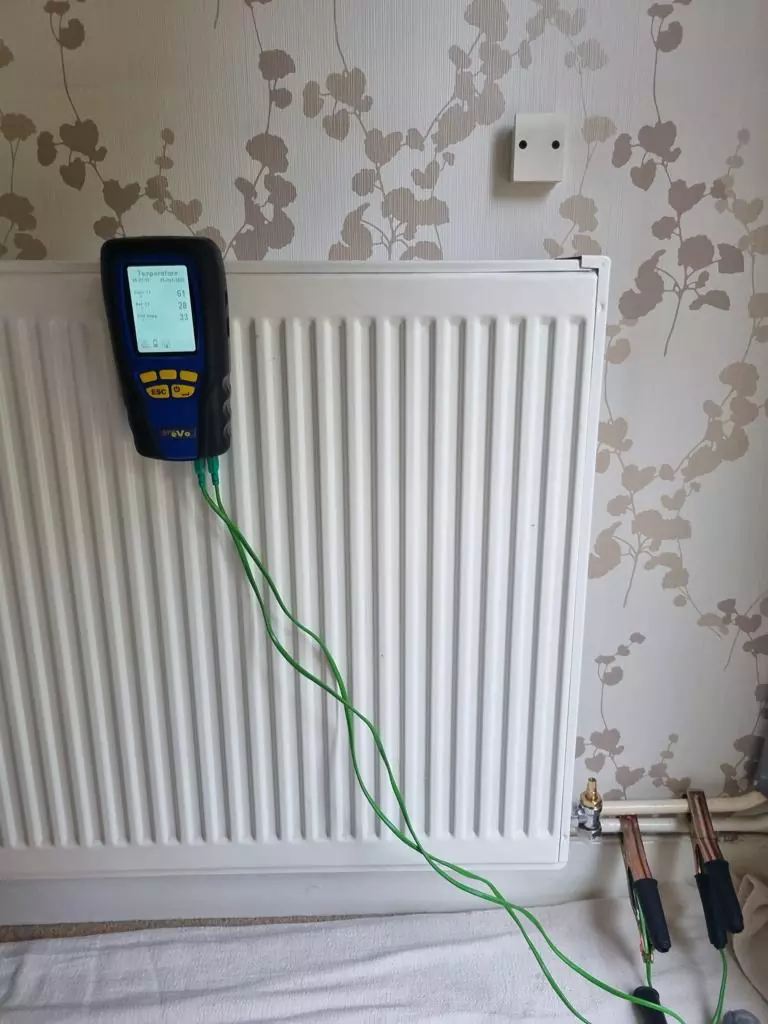
Frequent checks around your boilers, radiators, and pipes for signs of moisture or water leakage can assist in early detection of high boiler pressure. Look specifically for rust or corrosion on radiator valves and pipe connections, green deposits near joins in copper pipework, and stains on skirting boards or ceilings as these are telltale signs of a leak.
For leaks not immediately visible, professional non-invasive leak detection techniques may be necessary, especially if there are signs of cracks and seal breaks in valves and pipework due to prolonged high pressure. Quickly addressing and repairing any leaks is essential to prevent small problems from escalating and to halt the increase of high boiler pressure.
Step-by-Step Guide to Lowering Your Boiler Pressure
Occasionally, even with our best efforts, the boiler pressure may exceed the optimal range. When this happens, it’s time to roll up your sleeves and lower the pressure. However, do not worry, equipped with the right tools and knowledge, this task can be quite straightforward. You can either open a filter valve or a drain cock to let water out until the pressure gauge indicates 1 bar.
Bleeding radiators and draining water are two common methods used to lower boiler pressure. Although it may sound intimidating, especially if you’re new to boiler maintenance, these methods are relatively simple and can be performed by most homeowners. Always exercise caution to prevent water spillage.
Bleeding Radiators to Release Excess Pressure
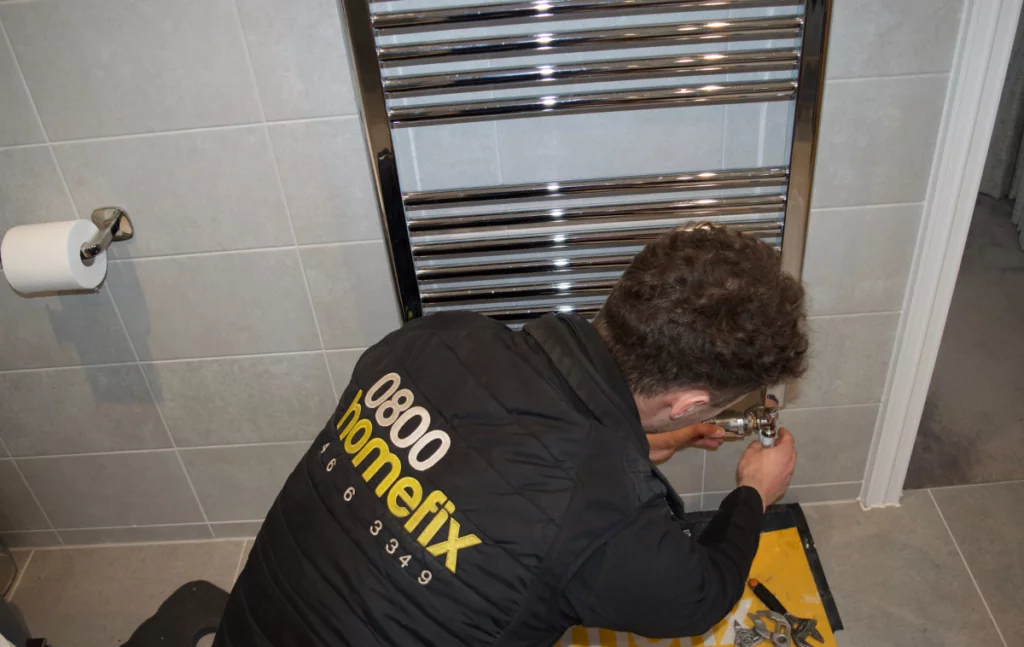
Bleeding radiators is an effective way to release trapped air and excess water from your central heating system, helping to reduce boiler pressure and ensure a consistent supply of hot water. Before starting, make sure the boiler is switched off and has cooled down to prevent any safety hazards.
This procedure requires a radiator key to operate the release valve, usually found on the top right side of the radiator. This allows trapped air and excess water to escape. Remember to have a cloth or bucket ready to catch any water that may be released during the bleeding process, which can take about 15 minutes depending on the number of radiators.
Draining Water via the Drain Cock
Another method to reduce boiler pressure is by draining water via the drain cock. Located within the pipework of your boiler system, typically found at the lowest point, the drain cock facilitates the removal of water from the central heating system.
Before operating the drain cock, make sure to have a bucket ready to catch any water and prevent spills. If possible, attach a hose to direct the water to a suitable drain or container. To drain water and reduce boiler pressure, open the drain cock with a spanner if required, and carefully release water, monitoring the pressure gauge until it shows 1 to 1.5 bars before closing the valve.
Addressing Common Causes of Increased Boiler Pressure
At times, regardless of our best attempts, the boiler pressure may stubbornly stay high. Under such circumstances, it’s important to identify and tackle the underlying cause. Common culprits include malfunctioning components such as a faulty expansion vessel, pressure release valve, or the filling loop.
A continuous rise in boiler pressure despite closing the filling loop taps indicates an internal malfunction. In such cases, the assistance of a Gas Safe Registered engineer might be required.
Other factors such as overfilling the boiler with water or aging components in boilers over 10 years old could lead to ineffective regulation of pressure.
Checking for a Faulty Filling Loop

The filling loop serves as the entry point for water from the mains into the system. This is a crucial component for maintaining the water supply within the system. It consists of two valves that control the pressure by allowing water into the system. If the filling loop valves’ handles are aligned with the pipe, it indicates they are open and can contribute to increased pressure.
A visual inspection of the filling loop should show whether the black levers are turning the metal spindles they are attached to, indicating the valves are responsive. If these valves do not change the boiler pressure when operated, or if water does not pour out when the hose is disconnected, it suggests the filling loop may be faulty.
Assessing the Expansion Vessel
The expansion vessel has a key role in maintaining consistent pressure within your heating system. It prevents sudden changes that can lead to boiler issues. A malfunctioning expansion vessel may lead to a rise in pressure, often indicated by a pressure gauge reading of 3 bar or above when the boiler is on.
Faulty expansion vessels are a prevalent issue, specifically in Vaillant boilers, which can contribute to inconsistent pressure regulation. A punctured diaphragm in the expansion vessel leads to ineffective separation of air and water, which is crucial for managing expansion and maintaining stable pressure.
To test the expansion vessel’s pressure, it should be checked without water pressure in the boiler, and should approximately read 20 PSI, a process often requiring a foot pump.
When to Consult a Gas Safe Registered Engineer
There are instances where DIY methods fall short, or the problem exceeds the knowledge of a homeowner. In such cases, it is essential to consult a Gas Safe Registered engineer. If DIY methods do not correct high boiler pressure, seeking the advice of a boiler engineer promptly becomes crucial to minimize safety hazards.
Leaks accompanying high boiler pressure are indicative of serious internal damage, necessitating immediate professional attention. Opting for a professional replacement could be both safer and more economical for boilers over 10 years old exhibiting frequent high-pressure readings.
Identifying Serious Faults That Require Expert Attention
Knowing when to call in a professional can save you time, money, and unnecessary stress. Specific error codes, such as F.12, F.74, F.75, S.41 on Vaillant boilers and E9, A1, 224V, 1065B, 2970B on Worcester Bosch boilers, indicate high pressure concerns and necessitate professional attention.
Leaking boilers experiencing high pressure or persistent dripping from the pressure release valve (PRV) points to significant hardware issues. Water output from the air valve suggests a failed diaphragm in the expansion vessel, both requiring expert intervention. If after attempting to resolve high pressure through draining water and bleeding radiators the boiler pressure continues to rise, it may foretell severe consequences like shutdown or breakdown, alongside risks associated with ignored leaks.
The Importance of Regular Boiler Servicing
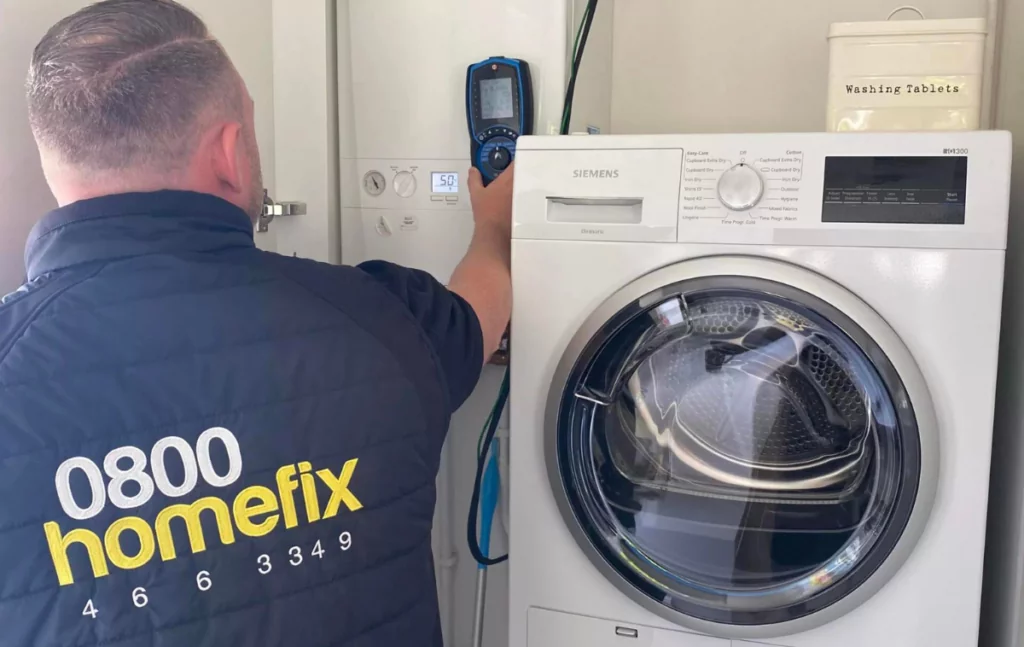
Regular boiler servicing is more than just a suggestion, it’s a necessity. It ensures that the boiler is running efficiently and can reveal any system issues, helping prevent high pressure scenarios and reducing energy expenses over time. Annual servicing by a Gas Safe registered engineer is often a requirement to maintain a boiler’s warranty, preventing the invalidation of benefits such as repairs or replacements.
Regular professional servicing prolongs the lifespan of boilers, leading to considerable cost savings and maintained efficiency as the boiler gets older. For landlords and business owners, meeting legal requirements to provide a Gas Safety Record is achieved through annual servicing by a registered engineer, ensuring tenant safety.
Preventative Measures to Keep Boiler Pressure in Check
Prevention, as they say, is better than cure. Implementing preventative measures can go a long way in maintaining your boiler pressure. This includes:
- Keeping the boiler room clean
- Ensuring vents supplying air to the boiler room remain open for proper ventilation
- Maintaining burner and boiler control covers in place to protect sensitive electrical contacts
Regular monitoring of the water level in the sight glass and steam pressure on the gauge, keeping a record in a logbook, also helps keep the boiler pressure in check. Testing the low water cutoff operation by opening the blowdown valve to ensure the burner cuts out with low water in the sight glass is another vital preventive measure.
Routine Checks and Maintenance
Regular checks and maintenance are highly effective in preventing high boiler pressure. Regular bleeding of radiators can prevent the build-up of air, which contributes to increased boiler pressure, helping to maintain the pressure within the ideal range.
To reduce excess pressure, a drain-off valve should be used cautiously by first switching the boiler off and waiting for it to cool down before attempting to drain any water. Adhering to these steps routinely can aid in averting high boiler pressure and ensuring the boiler’s optimal performance.
Understanding Your Boiler Brand’s Specific Needs
Each boiler brand comes with its unique requirements and maintenance guidelines. Adhering to the manufacturer’s guidelines for regular maintenance is key to maintaining correct pressure levels in your boiler. Error codes such as E9, A1, 224V, 1065B, 2970B on Worcester Bosch boilers and F.12, F.74, F.75, S.41 on Vaillant boilers indicate high pressure issues and require a professional’s assessment. To avoid encountering such issues, it’s essential to monitor your Worcester Bosch boiler pressure regularly.
Recording all boiler maintenance activities in a logbook helps keep track of the boiler’s condition and any adjustments made to it. This not only helps in maintaining the boiler’s efficiency but also aids in diagnosing any future issues that might arise.
Summary
In conclusion, maintaining your boiler pressure is essential for the longevity and efficiency of your heating system. High boiler pressure can lead to significant issues, including leaks and major malfunctions. Regular checks, routine maintenance, understanding your specific boiler brand’s needs, and knowing when to call in a professional are all key to keeping your boiler pressure in check. Remember, a well-maintained boiler is not only cost-effective and energy-efficient but also ensures a warm, comfortable home.
Frequently Asked Questions
How do I lower the pressure on my boiler?
To lower the pressure on your boiler, you can open the filter valve, use a drain-off valve, bleed a radiator, or undo a radiator nut. These methods can help alleviate high pressure in your boiler.
What happens if boiler pressure too high?
If the boiler pressure is too high, it is important to address it immediately as relying solely on the pressure relief valve is not a safe or efficient solution. It could potentially lead to inefficiency and pose a danger if the relief valve is faulty or jammed.
What to do if boiler pressure keeps rising?
If your boiler pressure keeps rising, it is important to address the issue promptly to avoid potential damage to vital components and prevent leaks. In severe cases, you may need to consider replacing the affected components or even the entire boiler.
What is the ideal boiler pressure?
The ideal boiler pressure is typically between 1 bar and 1.5 bars for most boilers. This range ensures efficient and safe boiler operation.
When should I call a Gas Safe Registered engineer?
You should call a Gas Safe Registered engineer when DIY methods fail to correct high boiler pressure or when serious faults and leaks are detected. It’s crucial to ensure the safety and efficiency of your gas appliances.

